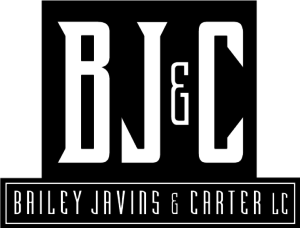The Current Status of Talcum Powder Litigation
There have been some shockingly large jury verdicts in talcum powder lawsuits over the past year, which has been a wake-up call for both Johnson & Johnson and the thousands of potential plaintiffs who still have yet to file suit.
In just the past year, the company has been ordered to pay almost $200 million. $177 million of those damages are punitive, meaning that juries are not happy with what is happening in these cases.
J&J first invented their talcum powder products over a century ago (1892) and they have been marketed for use in the nursery and the bathroom. Women have been using the products for hygienic purposes for decades, either sprinkling the powder on sanitary napkins or in their underwear for moisture and odor control. The substance is also found condoms and some diaphragms.
The Link Between Talc and Ovarian Cancer
The problem with using talcum powder products around the genital area is that they have been strongly linked to ovarian cancer. Since 1971, more than 20 studies have linked the substance to ovarian cancer. The most cited study comes out of Harvard University, which concludes that women who use talc powder products have a 33% greater risk of developing ovarian cancer than those who don’t. Ovarian cancer is a serious disease that takes the lives of more than 14,000 women in the U.S. each year.
Johnson & Johnson’s Knowledge of the Danger
Despite the numerous studies and evidence that there is a real danger, Johnson & Johnson has not issued a recall on their products. In fact, they’ve taken measures to cover up the problem, which is illegal.
Internal J&J correspondence has surfaced in some recent cases that proves the company knew of the danger of talc and made the choice not warn the public. A letter from a medical consultant warned J&J that denying the risks of talc associated with ovarian cancer could affect the company’s image.
Talcum Powder Cases
The first case was brought against J&J by a physician’s assistant named Diane Berg in 2009. She was diagnosed with ovarian cancer in 2006 and had used talcum powder in her underwear for most of her life. J&J offered her a $1.3 million settlement with a confidentiality clause, which she refused, deciding instead to warn others and share her experiences.
There are currently more than 1,700 pending lawsuits against Johnson & Johnson in both state and federal court alleging that the company ignored scientific studies linking its products to ovarian cancer.
$72 Million Verdict
The first large verdict in these talc litigation cases was in February 2016, when a St. Louis jury awarded $72 million to the family of a woman who died from ovarian cancer. Jackie Fox used Johnson & Johnson talcum powder products for her entire life, and she died of ovarian cancer in 2015. After a three-week trial, the St. Louis court awarded $10 million in compensatory damages and another $62 million in punitive damages to Fox’s survivors.
$55 Million Verdict
Just a few weeks after the verdict in Jackie Fox’s case, the same St. Louis court awarded $55 million in another talc powder lawsuit. Gloria Ristesund also used Johnson & Johnson products for feminine hygiene. She was diagnosed with ovarian cancer and underwent a hysterectomy, where talc particles were found inside her tumors. Ristesund was awarded $5 million in compensatory damages and another $50 million in punitive damages.
$70 Million Verdict
After just 3 hours of deliberation, a St. Louis jury awarded a California woman $70 million in October 2016. For more than four decades, 62-year-old Deborah Giannecchini used Johnson & Johnson’s baby powder for feminine hygiene. She was diagnosed with ovarian cancer in 2013, and her doctors tell her that she has an 80% chance of dying within the next two years. Giannecchini was awarded $2.5 million in compensatory damages, $65 million in punitive damages, and another $2.5 million from the talc supplier, who was a co-defendant.
Talcum Powder and Mesothelioma
The largest and most noteworthy talc litigation cases right now deal with ovarian cancer, but there is a new type of claim emerging. These claims allege that consumer talc products were contaminated with asbestos.
As early as the 1970’s, scientists discovered that some talc products contained asbestos fibers. In 1973 the Federal Government stepped in, passing a law requiring that commercial talc products be asbestos free and adequately tested.
In 2012, the U.S. Food & Drug Administration (FDA) tested dozens of consumer talc products and found no asbestos fibers in any of those products tested. The problem with this study is that only four talc suppliers submitted samples, so the study’s findings are not complete. The FDA states in the body of the study report “…while the FDA finds these results informative, they do not prove that most or all talc or talc-containing cosmetic products currently marketed in the United States are likely to be free of asbestos contamination.”
Despite these test results, cases are coming forward, and plaintiffs are arguing that those tests simply weren’t sensitive enough. If the asbestos litigation has taught us anything, it’s that there is really no safe level of this dangerous substance.
Talc used in cosmetic products could be linked to the deadly lung disease, mesothelioma, because of the asbestos content. There have been several cases and favorable rulings linking talc to mesothelioma. The first was in 2013 with a $2 million verdict for a New Jersey woman, and the most recent cases in a 2016 resulted in jury awards of $13 million and $18 million.
Johnson & Johnson continues to claim that their products are safe and states that medical evidence supports the safety of cosmetic talc. They vow to appeal the verdicts as each new court date and plaintiff arrives on their doorstep.
If you have been diagnosed with ovarian cancer or mesothelioma after using long-term use of talcum powder products, contact us to discuss your talcum litigation options. The experienced talc litigation attorneys at Bailey, Javins & Carter can walk you through your options and will work aggressively to get you the compensation you deserve. Contact BJC now to schedule a free initial consultation about your rights to compensation for damages from talcum powder exposure.



